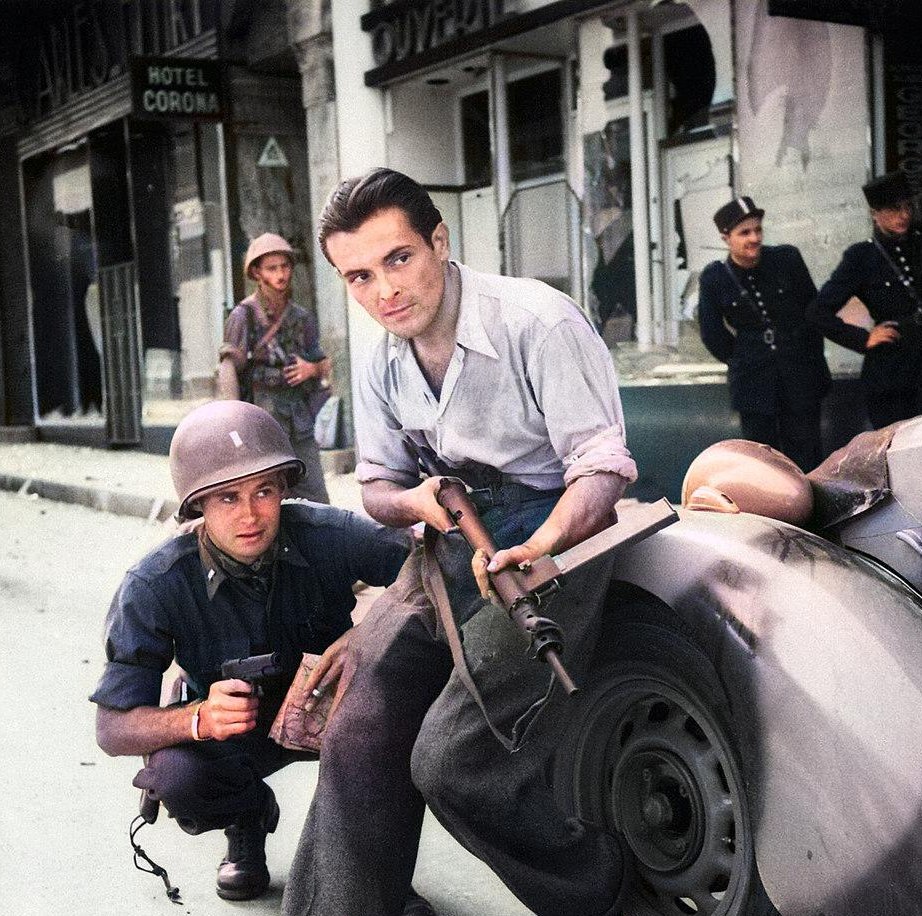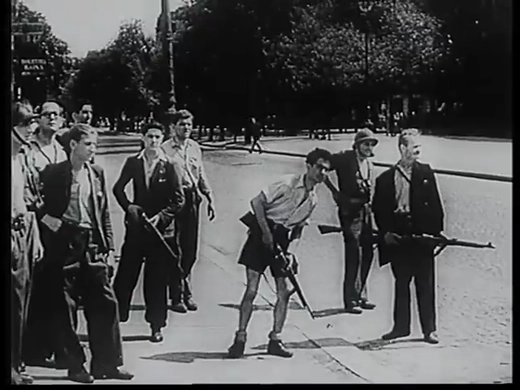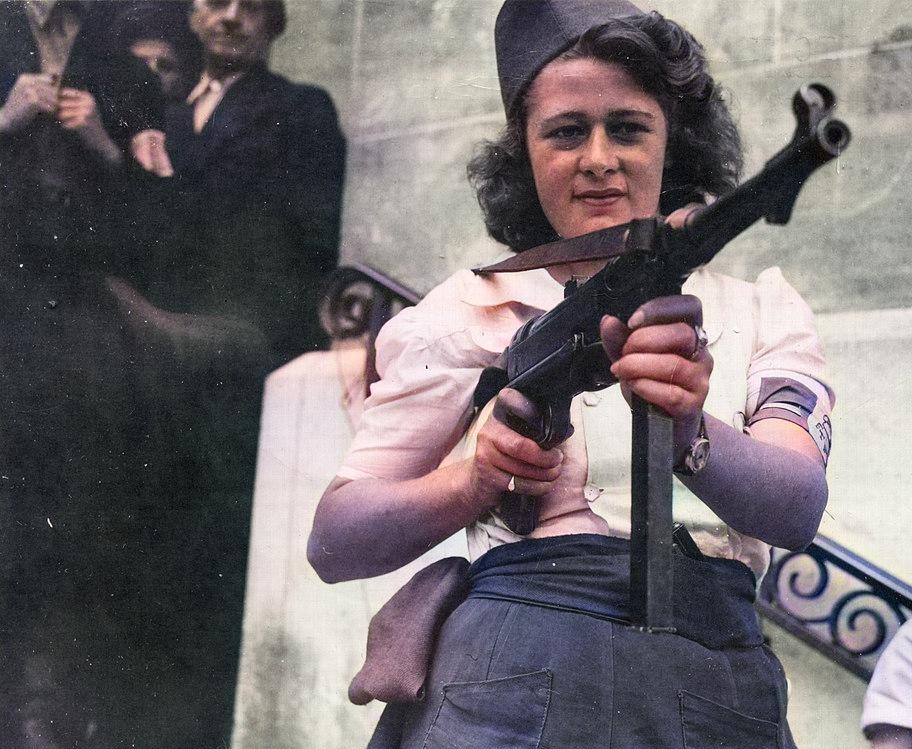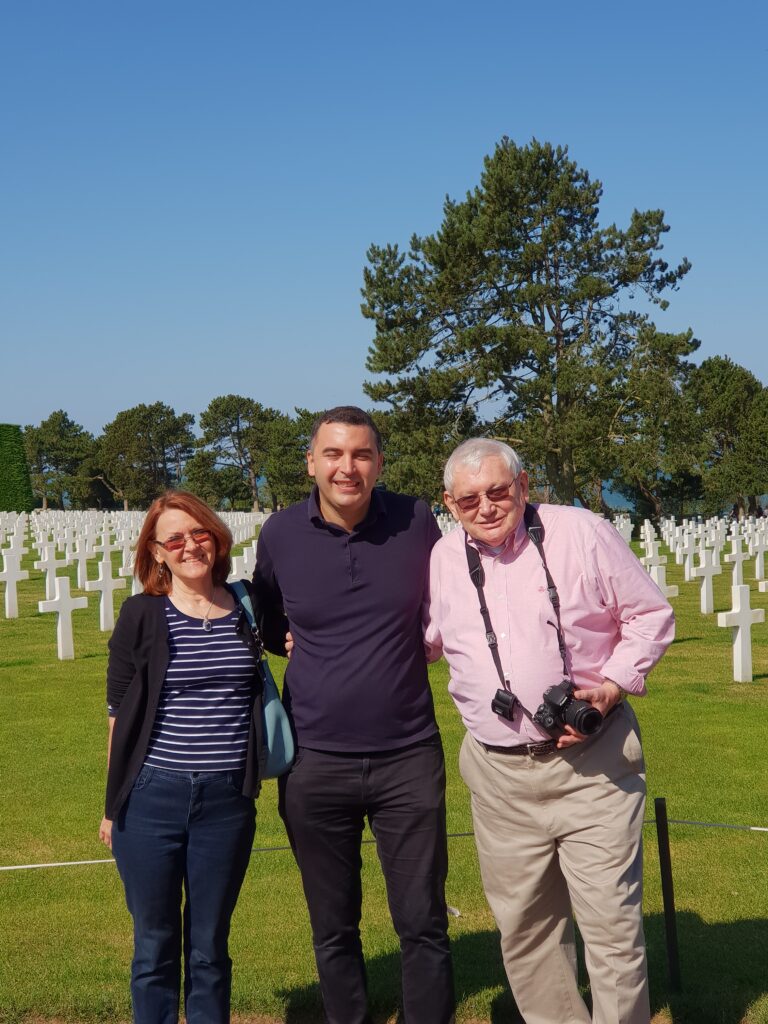My grandfather fought with the French army and with the brave American soldier to Liberate Paris.
And I always wanted to summarize this amazing story of the Allied soldiers who gave their lives to save Europe (and the world) from obscurity. Freedom that we still enjoy today.
How it felt to be in Paris during WWII ?
June 14th, 1940. The day starts like any other day – a cool-mist covers the ground as Parisians begin waking from their slumber. Many awake with knots in their stomachs, fearful that soon their lives would change forever, yet completely unable to stop the advancement of time. They have no idea how true those sentiments are. Soon, the sky, with the first glimmer of what promises to be a magical sunrise, fills with piercing sirens, resonating throughout the sleepy city.
Terrified men and women peer out their drape-covered windows, sealed tightly as though this act alone would keep the oncoming tides of history at bay. These sirens signal many’s worst fear, indicating Paris has fallen and is now under Nazi control. A loud voice booms through the megaphones, heavy with a distinct German accent, confirming that, indeed, their beloved France has fallen, and the city is in lockdown; their nightmare is now a reality. It should come as no surprise since only one month earlier; the German Wehrmacht stormed the city in a deadly blitzkrieg. However, many have held out hope.
Possible tour in Europe : Berlin tour – Third Reich and WW2 Private Tour by Matti.
France surrendered for a while to regroup
Within eight days, France signs an armistice with Germany, officially creating a French puppet state with a new capital in Vichy. As many weigh their options and resign themselves to this new reality, a quiet uprising takes root. This Free French resistance is inspired by General Charles de Gaulle, the outspoken general who took to the radio on the same night that France fell, declaring an impassioned rejection of the Nazi regime. Together they resolve to stand against Nazi rule and fight for the heart of not only their beloved nation but the world.
Possible tours:
See Musée de L’Armée – Get a Private tour to Musée de L’Armée
The resistance of France
Though its start was modest at best, the resistance movement received a much-needed boost of strength when in June of 1941, Hitler’s attack against the Soviet Union enraged the French Communist Party, prompting them to join the fight against the German State. The dilemma became knowing who to trust; though many Parisians decided to fight against the Nazi regime, many took their message wholeheartedly, choosing to join the German invaders. One error of judgment, trusting the wrong person, or letting a glimmer of resistance show through meant certain death.

The resistance movements in the north were the first to begin their attack on the Nazi Forces. Although many small offshoots banned together daily, it was largely unorganized in its infancy. Northern resistance fighters took aim at Germans in general, while their southern counterparts focused on the Vichy government. Soon, there were an impressive six underground resistance newspapers in circulation, opening a means of communication between groups spread throughout the country.

Guerilla warfare against the Nazis became a favorite tactic as more French workers were drafted into Nazi service. These draftees ignored their call to service, choosing instead to fight from the hills, naming themselves Maquis, translated to “underbrush.” Finally, in 1943, the resistance grew into a form of national unity, and a National Resistance Council was established.
This growth meant the resistance would grow from a meager group of outliers to over 100,000 members involved in a wide range of movements spread throughout the country. Sixty cells were tasked solely with collecting intelligence and sharing it within themselves and the Allied forces. Resistance cells were able to send the Allies over 3,000 written and 700 wireless reports, providing priceless information that would soon turn the tides of the war. These intelligence reports crippled German invasion plans and assisted with the escape of Allied airmen stranded on foreign soil. The information would also play a vital role in a day that would go down in history.
The Allies prepare to liberate Europe
Normandy, June 6th, 1944. As the Allied forces begin their deadly assault, the French resistance takes up arms. The Free French army is now large enough to play a vital role in disarming the Germans, sabotaging bridges, and destroying over 1,800 railways keeping them from bringing in much-needed reinforcements. An analysis completed post-war shows that the Free French resistance fighters performed over 150 of the most successful acts of German sabotage against vital Nazi factories using only 3,000 pounds of explosives or the equivalent of the load carried by only a single mosquito plane.
However, the success of the Free French resistance did not stop the Nazis from committing incredible atrocities on French Jews. As resistance forces took shape, thousands of Jews were transported to Auschwitz. On June 7th, 1942, German officials decreed all French Jews were to wear a yellow star, effectively signaling them for death. Raids in both unoccupied and occupied French zones became a common occurrence, and a sinister plot formed within the now corrupt French National Police.

In order to ensure compliance, the Nazis originally told the French police the Vel d’Hiv roundup would only include stateless and foreign Jews, sparring French, British, and American Jews, and those under the age of sixteen from deportation. However, that would soon prove to be a false promise as over four thousand Jewish children were sent to their deaths.
In the early, quiet hours of July 16th, the French police began their massive roundup of thousands of Jewish men, women, and children. This day alone would see 2,573 men, 5,165 women, and 3,625 children snatched from their homes and sent to Drancy, a transit camp for deported Jews. After five days at Drancy, the Nazis transferred all 7,000 Jews out of Paris to other transit camps, where they were held until July. Families were then torn apart and separated, finding themselves in cattle cars bound for Auschwitz, where they would be murdered for the simple act of being Jewish. As the war raged on, another 77,000 French Jews were killed in concentration camps, most of whom died in Auschwitz.
Possible Tours :
Walking tour in Paris – WWII in Paris & Liberation of Paris
A long line of French/ American relations
Without the French resistance, the outcome of WWII may have likely ended differently
Their dedication to fighting the inherent evil of the Nazi regime, and partnering with Allied forces, was just one example in a long line of French/ American relations. On February 6th, 1778, the Franco-American Alliance would become a turning point in America’s war for independence.
With a mask of neutrality hiding their pro-American intentions, France began secretly arming American colonists from 1775 to 1777. Glimmers of the budding alliance were seen as early as the Continental Congress in 1776, where Benjamin Franklin and Silas Deane established a joint diplomatic commission with the French, seeking financial aid and recognition. However, it wasn’t until a decisive victory at the Battle of Saratoga that the French decided to provide their full backing to their American counterparts.
This change of heart was due in part to Major General Gilbert du Motier, Marquis de Lafayette, known simply as Lafayette to most. In the midst of the war, Lafayette returned to France to garner aid and support, an act that would prove to be a key turning point on America’s path to victory. Upon his return, Lafayette blocked British troops at the Battle of Yorktown, allowing American soldiers a critical victory that led to their ultimate independence.

This longstanding alliance between the French and Americans continues to this day.
Relations between the two countries are friendly and active, thanks to the common values and similar economic and political policies. Although differences are unavoidable, the two countries have found ways to discuss them openly and frankly without causing division.
Currently, France and the United States work closely together on many issues, particularly on the anti-terrorism front. Their common goal to mitigate the creation and distribution of weapons of mass destruction is a tie that binds, encouraging constant vigilance and communicative action. The two countries also work together to tackle regional issues, including the Middle East, Africa, Central Asia, and the Balkins. With the recent pandemic that swept the globe, France and the United States worked closely, monitoring outbreaks and sharing intelligence on the Covid-19 virus, highlighting a long collaboration on international public health crises’ and threats.
Investment and trade between France and the United States continue to thrive, with more than $138 billion in services and goods traded yearly. Additionally, the United States remains the top French destination for investments, while the U.S. is France’s largest foreign investor. There is even a specific French/ American bilateral investment convention and tax treaty that addresses tax evasion and double taxation. U.S. exports to the French nation include telecommunications, engines and aircraft, computer software, medical instruments, broadcasting supplies, and more. Currently, France and the United States are joint members of many international organizations, including the Euro-Atlantic Partnership, North Atlantic Treaty Organization, G-20, World Bank, G-7, World Trade Organization, and more.
With such a rich, long history of support, France and the United States continue to have a solid relationship that has truly stood the test of time. Facing many of the same world threats as a united front, it’s easy to see why the two countries remain loyal allies. History shows that as time moves forward, the French/ American alliance will continue to deepen and hold firm against outside influences, seeking to create a rift in their steadfast bond.

For those seeking to learn more about France and the United States beautiful shared history, walking tours through Paris, highlighting the occupation, resistance, and liberation are available. These tours offer an incredible opportunity to see first hand how the brave resistance fighters stood against evil and fought for what was right.

We can also drive to Normandy and see by yourself the Omaha beach, the defensive German bunkers and their deceptive tactics, and of the Bayeux Museum of WWII in Normandy
For Canadian visitors, let’s visit the Canadian memorials in France.
Let’s not forget the brave heroes. Let’s earn this freedom !
